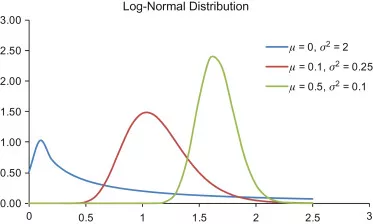Why the Lognormal Distribution is the Appropriate Road Safety Hedgehog Model

The Lognormal distribution is the appropriate statistical model for the positive domain of crash rates. This model allows the scale parameter to vary in relation to explanatory variables, which makes it more appropriate than the zero-inflated Poisson model and the crash count model. However, it is still important to use caution when interpreting the data derived from this distribution. Listed below are several reasons why the Lognormal distribution is the appropriate statistical model for crash rates.
Lognormal distribution is appropriate for representing the positive domain of crash rates
In the statistical literature, lognormal distributions are the most widely used model. These distributions have been widely used for a number of different purposes, and have been around for decades. Recent inferential work involving lognormal distributions has made extensive use of numerical methods. However, there is still a need for robust statistical methods to deal with undetected outliers. These outliers often arise due to large variances and legitimately belong to the study group.
Chinese scientists have investigated the effect of lognormal distribution on the statistical interpretation of crash rates. The researchers studied data on fatal crashes and subsequently used the lognormal distribution to represent the data. In their study, the authors of the study, Kobayashi, N., Kohyama, K., Moriyama, O., Sasaki, Y., and Matsushita, S., concluded that lognormal distributions represent crash rates more accurately than other statistical methods.
It allows the scale parameter to vary with respect to explanatory variables
When a factor varies with the scale parameter, the scaled value is the result. A ratio is a meaningful type of variable. For example, 100 feet is twice as long as 50 feet, and a Kelvin temperature of 100 represents twice the thermal energy of a Fahrenheit temperature of fifty. These variables differ from interval variables in that they do not have a true zero and only have relative values.
Interval scales measure distance better than ordinal scales. These variables have equal distances between the values, so the difference between two values is equivalent to nine. A good example is temperature measured in Fahrenheit or Celsius. There is an equal distance between 42 degrees and 32 degrees in both cases. This scale is useful when there are significant differences between two variables, but is not ideal for most situations.
It is more appropriate than zero-inflated Poisson model
The EPDO was a statistical distribution containing a large number of zeroes. The model was trained on interstate barriers that had both crashes and no crashes, as well as those that were out of the standard range of height. The study also considered the effect of future traffic increases, as barriers that are too high are more likely to cause crashes. Although the study focused on barriers in the standard height range, the EPDO model is also applicable to barriers that fall outside the recommended height.
In addition to incorporating the two-component mixture model, the zero-inflated Poisson model has a truncated count component. It utilizes negative binomial and Poisson distributions to describe the data. Figure 5 shows the process used in this study. The model is able to accurately predict crash counts, even when the count is zero. The zero component of the model is modeled by binary logistic regression.
It is more appropriate than crash count model
For a given occurrence of a crash, the probability of the crash is the count data. Several models have been proposed to model crash frequency, including the Poisson, negative binomial, hurdle, and zero-inflated negative binomial models. However, the Poisson model is often the most appropriate for this type of data. This is because it better accounts for the fact that crashes are rare events. The Poisson model is also suitable for analyzing crashes occurring on a specific road section.
The crash count model is generally a better choice if data is available for multiple years. Ideally, the model should have at least three years of data to assess its performance, but this can sometimes lead to misguided results. For example, a facility could have undergone significant change since the last study – for instance, the addition of a lane. Travel volume may have increased. Other factors may also skew the results. Furthermore, it can be difficult to obtain several years of data for a crash site. In such cases, it is necessary to develop additional methods for enhancing the estimates.





